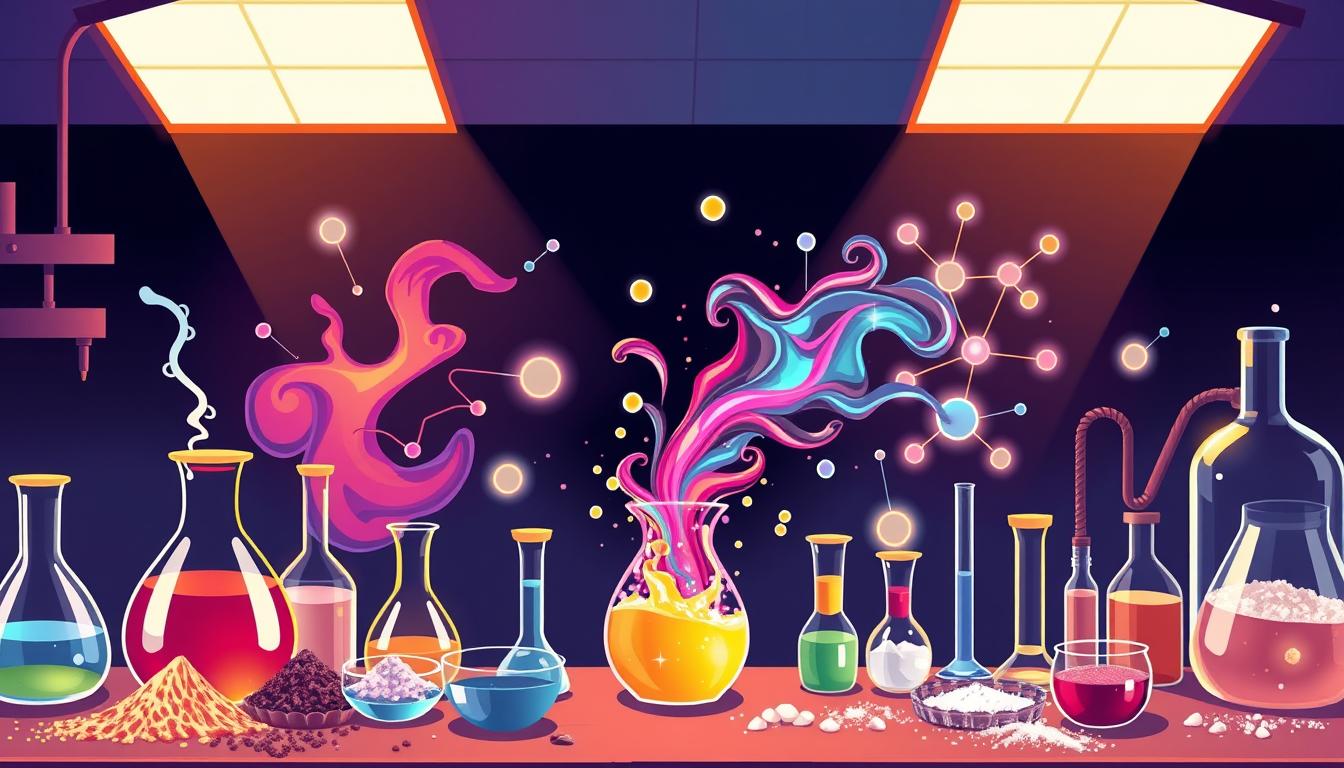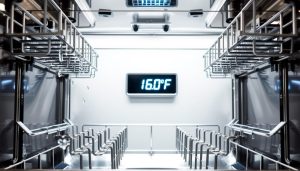Did you know a single loaf of bread involves over 20 chemical reactions? Your kitchen transforms into a science lab every time you preheat the oven. Mixing flour, water, and heat isn’t just cooking—it’s a masterclass in how molecules behave under pressure.
Creating pastries or bread requires the same precision as a lab experiment. Measure ingredients wrong, and your cake collapses. Overmix batter, and muffins turn rubbery. These outcomes aren’t random—they’re governed by predictable scientific principles hiding in your pantry staples.
This guide unlocks why precise measurements matter and how heat alters proteins and sugars. You’ll see your mixing bowl as a reaction vessel where ingredients like baking soda become carbon dioxide factories. Even humidity plays a role, proving environment shapes results as much as ratios.
Key Takeaways
- Every recipe relies on chemical processes you can observe and control
- Ingredient ratios directly impact texture and structure through molecular interactions
- Heat application triggers irreversible transformations in doughs and batters
- Common pantry items act as leavening agents, stabilizers, or emulsifiers
- Environmental factors like temperature affect reaction speeds and outcomes
Fundamentals of Baking Science
Behind every perfect cookie lies a precise balance of core components. Four elements form the foundation of most recipes: flour, sugar, eggs, and butter. Each plays distinct roles that transform simple mixtures into structured delights.

The Role of Essential Ingredients
Flour acts as your recipe’s skeleton. Bread flour’s high protein creates chewy baguettes, while cake flour’s low protein yields tender layers. Choose all-purpose for versatility in cookies and quick breads.
Sugar does more than sweeten. Granulated sugar traps air during mixing, helping cakes rise. Brown sugar’s molasses adds moisture to chewy cookies. Both types delay gluten formation for softer textures.
Eggs bind batters and create structure. Their proteins set during heating, while yolks add richness. Whites give angel food cakes their lift, and whole eggs provide golden crusts.
Understanding Leaveners and Their Reactions
Butter serves dual purposes. Melted butter makes dense brownies, while creamed butter incorporates air for fluffy cakes. Salted varieties enhance flavor; unsalted allows precise control.
These ingredients work like chemical partners. Swap one without adjusting others, and reactions falter. Measure accurately—even 10% extra flour can turn cookies into bricks. Your pantry holds edible science tools waiting for experimentation.
Baking Chemistry 101: Exploring Chemical Reactions in Your Kitchen
Your oven hides more chemical secrets than a high school lab. Two critical processes shape your results: leavening agents’ interactions and biological fermentation. Let’s examine how invisible gas bubbles and protein networks transform raw dough into airy breads and tender cakes.

Baking Soda vs. Baking Powder
Sodium bicarbonate (baking soda) needs acidic partners like buttermilk or vinegar. When mixed, they create immediate carbon dioxide bubbles. This explains why pancake batter fizzes when you add lemon juice.
Baking powder contains its own acid (cream of tartar) and stabilizers. Double-acting varieties release gas twice: first during mixing, then in the oven’s heat. This makes them ideal for cookies needing delayed rise.
| Feature | Baking Soda | Baking Powder |
|---|---|---|
| Acid Required | Yes | No (self-contained) |
| Reaction Stages | Immediate | Two-phase |
| Best For | Brownies, quick breads | Muffins, cakes |
The Science Behind Yeast Fermentation and Gluten Development
Yeast acts as a living factory. It eats sugars from flour or added sweeteners, producing carbon dioxide and alcohol. Molasses fuels faster fermentation than white sugar due to mineral content.
Gluten forms when water activates wheat proteins. Kneading aligns glutenin and gliadin into stretchy sheets that trap gas bubbles. Overmix, and these networks become tough; undermix, and bread collapses.
Struggling with dense loaves? Check expiration dates on yeast packets. Old yeast lacks vitality, while warm liquids (110°F max) optimize activity without killing cells.
Techniques and Tips for Perfect Baked Goods
Mastering kitchen science requires equal parts precision and intuition. While ingredients set the stage, your techniques determine whether chemical reactions succeed or stall. Let’s explore methods that turn unpredictable outcomes into reliable texture triumphs.
Measuring Ingredients with Precision
Digital scales beat measuring cups for accuracy. A 5-gram variance in flour can alter cookie spread by 15%. Liquids need eye-level checks in graduated cups – tilted measurements lie by up to 20%.
Temperature, Timing, and Mixing Methods
Butter at 68°F creams best with sugar. Cold eggs curdle batters, while room-temperature ones emulsify smoothly. Mixing duration controls gluten development:
| Method | Texture Result | Best For |
|---|---|---|
| Creaming | Airy crumb | Cakes, cookies |
| Folding | Delicate layers | Muffins, soufflés |
| Beating | Chewy structure | Bread dough, bagels |
Watch dough consistency – overworked gluten makes bread tough. Underdeveloped strands cause collapsed cake layers.
Avoiding Common Baking Pitfalls
Oven thermometers prevent temperature guesswork. Opening doors early releases steam needed for rise. Substitute ingredients only when understanding their chemical roles – coconut oil lacks butter’s water content, altering hydration ratios.
Track bake times using multiple cues. Golden edges signal caramelization completion. A 205°F internal temp ensures bread doneness without dryness. Your hands become sensors – springy tops indicate proper fermentation.
Conclusion
Transforming simple ingredients into culinary masterpieces isn’t magic—it’s applied science. With this knowledge, you’ve moved beyond following instructions to decoding why recipes work. When cookies spread too thin or bread fails to rise, you’ll now spot the culprit: expired leaveners, unbalanced ratios, or temperature mishaps.
Your pantry essentials—flour, sugar, and butter—become tools for experimentation. Swap ingredients intentionally, knowing how each affects texture and structure. Quality matters: fresh baking powder reacts predictably, while proper flour types ensure ideal gluten development.
Keep key items stocked to seize creative opportunities. A well-organized kitchen lets you test theories—like adjusting acidity for crispier crusts or modifying mixing techniques for airier cakes. Every batch becomes a chance to refine your understanding of edible reactions.
You’re now equipped to innovate with confidence. Whether perfecting sourdough or crafting new desserts, remember: successful results stem from controlling chemical interactions. This foundation turns occasional triumphs into consistent victories.



